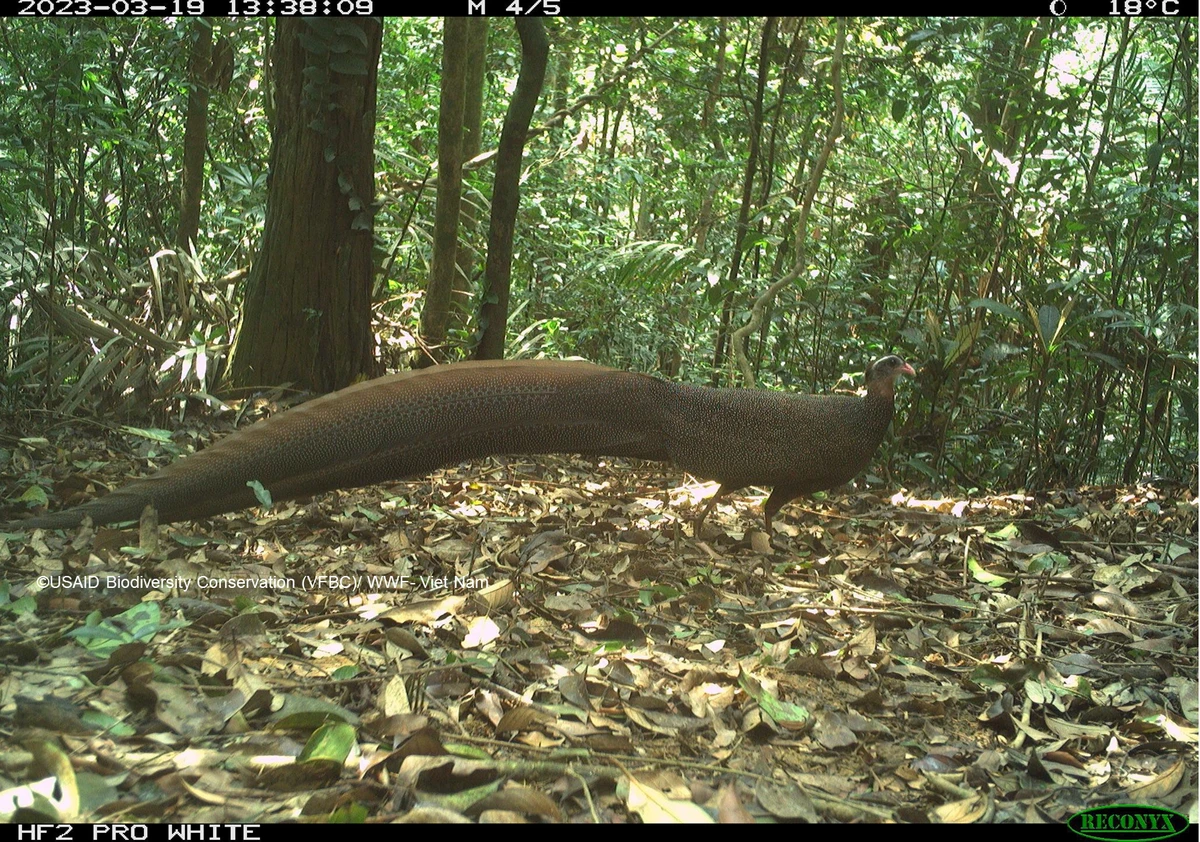(PLO)- Survey results from camera traps show that many important forest animal species have not been recorded and may have declined because trapping is still widespread on a large scale.
(PLO)- Survey results from camera traps show that many important forest animal species have not been recorded and may have declined because trapping is still widespread on a large scale.
On December 8, the Biodiversity Conservation Component of the Sustainable Forest Management and Biodiversity Conservation (VFBC) Project funded by the United States Agency for International Development (USAID) announced the results. the largest camera trap investigation ever in Vietnam.

Deputy Minister of Agriculture and Rural Development Nguyen Quoc Tri at the conference. Photo: Provided by the Ministry of Agriculture and Rural Development.
According to conservation experts from the World Wide Fund for Nature (WWF-Vietnam), this is the most comprehensive and systematic survey of biodiversity using camera traps ever conducted in Vietnam. Vietnam with financial support from USAID. This survey is to monitor biodiversity and forest cover.
The survey results showed that populations of many important forest animal species were not recorded and may have declined as trapping remained widespread.
To conduct the investigation, the project established 1,176 camera trap points in 21 special-use forests and protection forests in 8 provinces.
During this round of camera trapping, more than 120,000 animals were recorded in millions of images captured by camera traps between 2019-2023.

Admire images of rare wild animals from camera traps. Photo: Ministry of Agriculture and Rural Development.
Noteworthy is the lack of images of large carnivores and herbivores such as tigers, leopards, fire wolves and saola - one of the few large mammals discovered in the last 50 years. .
Camera traps only recorded populations of Asian Elephants in 2 project areas and large ungulates such as gaur in 1 project area.
Among them, the majority of recorded species are those that are best able to withstand hunting pressure such as monkeys, ferrets and wild boars.
According to the project management board, although survey results show that wildlife has seriously declined in all 21 special-use forests and protection forests, the level of species richness and number of endemic species is similar. relatively high, with 9 endemic species and 21 endemic species of the Truong Son range at high risk of threat recorded.
Rare species such as the giant muntjac and Sun bear were also discovered, contributing to providing some records of these species in Vietnam over the past 20 years.
The second round of surveys is being conducted in 21 special-use and protection forests and will be compared with the initial results when the project ends in 2025. The results of this survey will allow the project to assess biodiversity trends in 21 regions during project implementation.
We invite PLO readers to admire many rare wild animals through camera traps:

Gaur.

Civet.

Civet.

Striped civet.

Brown foot scrub.

Purple pheasant.

Golden Cash Chicken.

Sun bear.

Black bear.

Pig-tailed monkey.

Pig badger.

Large gills.

Mang Truong Son.

Wild cat.

Deer.

Chamois.

Numbness.

What about hemorrhoids?

Asian Elephant.

Striped rabbit.
Hanoi
1076 view
Update day
: 09/12/2023
VÕ TÙNG

 vn
vn en
en ja
ja ko
ko zh
zh





























































